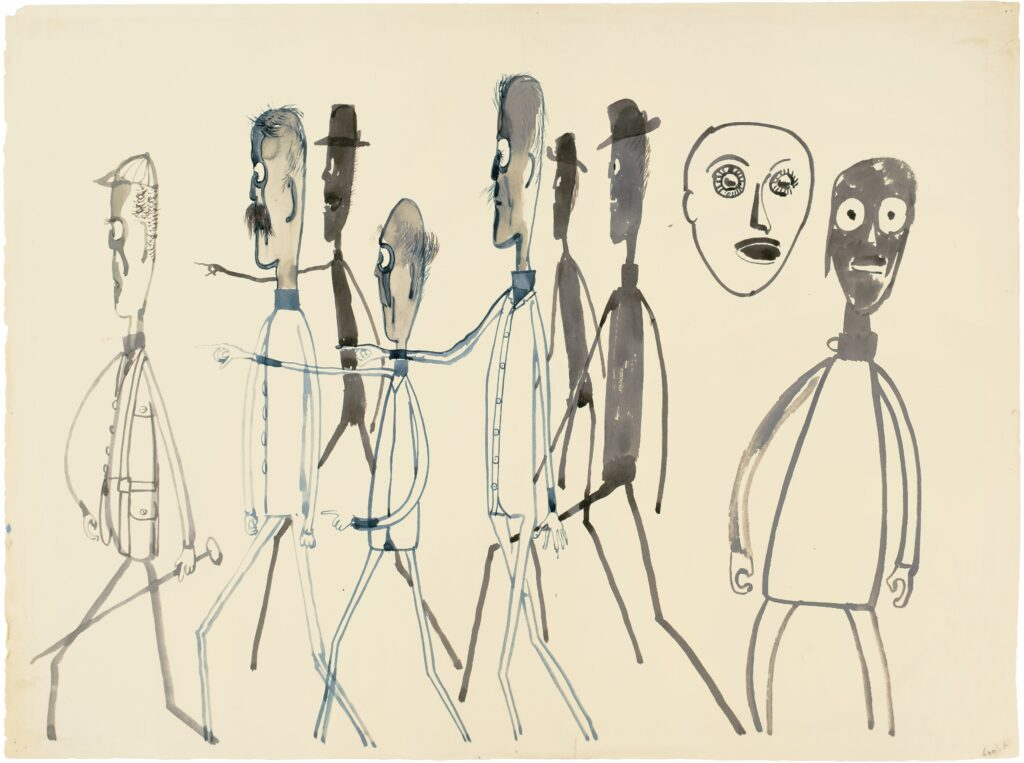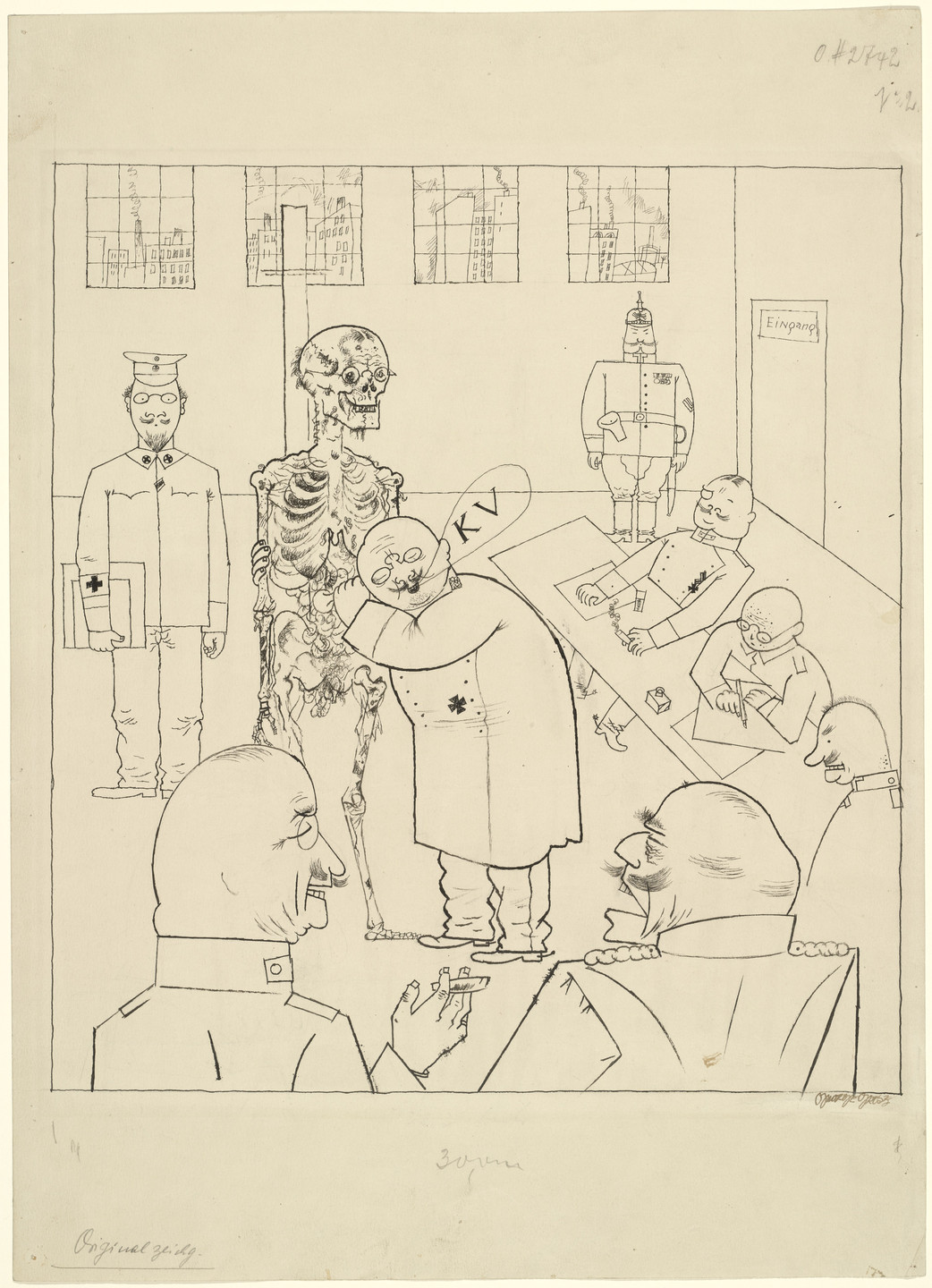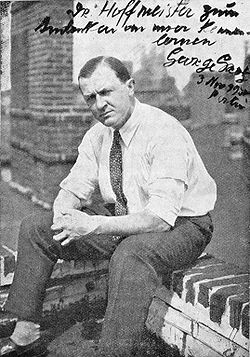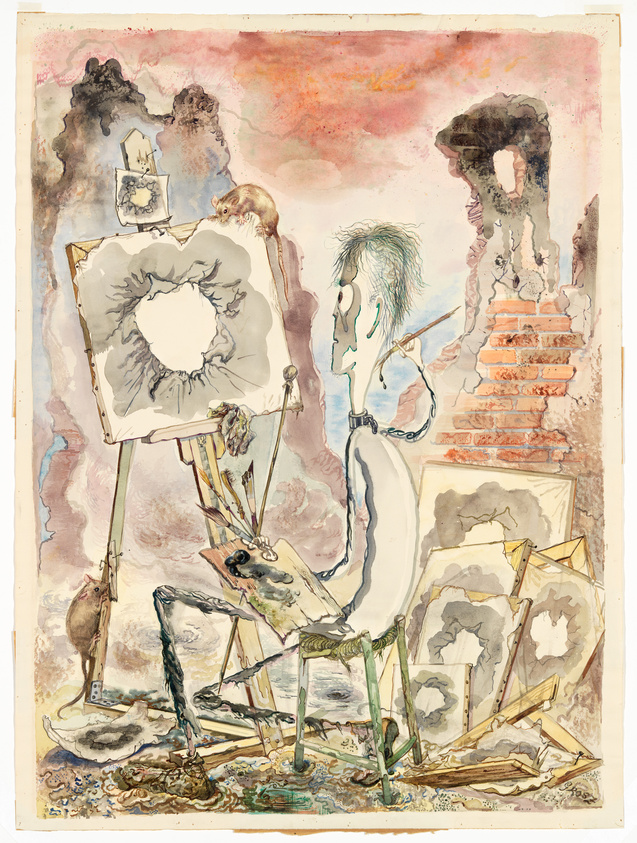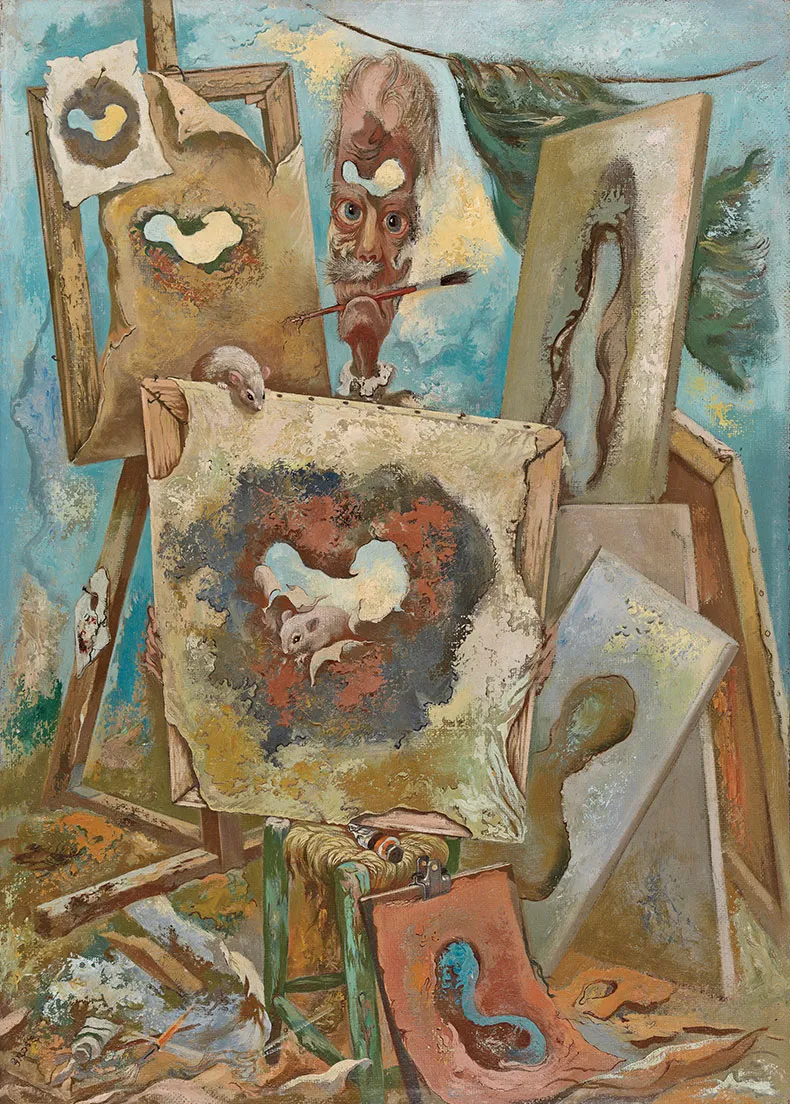created 2025-06-23, & modified, =this.modified
German artist who lived 1893 - 1959, known for his caricatural drawings and paintings of Berlin life in the 1920s.
Title
The term is derived for the Italian caricare—to charge or load.
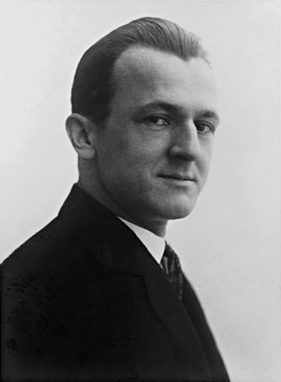 In 1914 he volunteered for military service int he hope that by preemptive conscription would allow him to avoid the front.
In 1914 he volunteered for military service int he hope that by preemptive conscription would allow him to avoid the front.
In 1916 he changed the spelling of his name to “de-Germanise” and internationalise his name – thus Georg became “George” (an English spelling), while in his surname he replaced the German “ß” with its phonetic equivalent “sz”. He did this as a protest against German nationalism and out of a romantic enthusiasm for America.
Following the November Revolution in the last months of 1918 he joined the Spartacists League, which was renamed the Communist Party of Germany.
In the same year he published a collection of his drawings, titled Gott mit uns (“God with us”), a satire on German society. Grosz was accused of insulting the army, which resulted in a 300 German Mark fine and the confiscation of the plates used to print the album. He also organised and exhibited at the First International Dada Fair.
He traveled to Russia in 1922 where he met with Vladimir Tatlin, but left unimpressed with the Soviet Union and ended up leaving the KPD (though his political positions were unchanged.)
He left Germany in 1933, only weeks before the Nazis declared him an enemy of the state, raided his apartment, and confiscated his art.
Daum marries her pedantic automaton George in May 1920, John Heartfield is very glad of it,
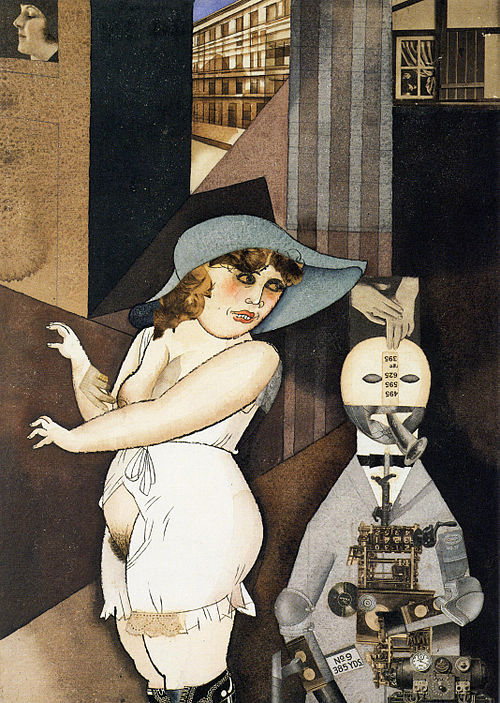
Grosz married Eva Peters on 22 May 1920. This painting reflects his Dada artistic tendency of the time, and is an ironic take on his recent marriage. His wife had been nicknamed by him as Maud, and the title Daum is an obvious anagram of that short form. The scene takes place having an irrealistic urban background that seems inspired by the work of Giorgio de Chirico. His wife is largely undressed, still wearing her hat, appearing reluctant near her husband, Grosz, who appears in a half-human, half-machine form, as a robot or automaton. This is a reference to the dadaist concept of the artist as a kind of machine.
The concept of the painting was explained by Grosz publisher Werner Herzfeld who said that marriage “comes between the bride and groom like a shadow, this fact that, at the very moment when the wife is allowed to make known her secret desire and reveal her body, her husband turns to other soberly pedantic arithmetical problems…”
Fit for Active Service by George Grosz
rel:George Grosz A work of New Objectivity which was a German reaction against expressionism.*Sachlichkeit should be understood by its root, Sache, meaning “thing”, “fact”, “subject”, or “object.” Sachlich could be best understood as “factual”, “matter-of-fact”, “impartial”, “practical”, or “precise”; Sachlichkeit is the noun form of the adjective/adverb and usually implies “matter-of-factness”.
It depicts a bare skeleton being judged as physical fit for conscription by a military doctor.
Grosz was drafted by the German military during WWI, but was able to avoid conscription after being deemed unfit for duty. He was sent to an insane asylum where he was examined by doctors and judged as fit. He was later discharged after attempting suicide.
He spelt his name with the terminal e in the English manner, out of sheer anti-nationalist feeling.
Of course, there was a kind of mass enthusiasm at the start. But this intoxication soon evaporated, leaving a huge vacuum… And then after a few years when everything bogged down, when we were defeated, when everything went to pieces, all that remained at least for me and most of my friends, were disgust and horror.
Some quotes:
I am lonely without measure; that is to say, I am alone with my doubles, phantasms in whom I realize specific dreams, ideas, inclinations, and so on. I rip three other people out of my inner life, give them names, and believe in them myself. Gradually three clearly defined types have emerged: 1: Grosz. 2: Count Ehrenfried, the nonchalant aristocrat with the well-manicured fingernails, concerned only with cultivating himself; in a word, the detached, aristocratic individualist. 3: The physician. Dr. William King Thomas, the more American, practical counterweight to Grosz the mother figure.
Árt is dead. Long live Tatlin’s new machine art.
On him:
Link to original”This cynic is a secret moralist. Negation is merely his manner of speaking; what he really.. ..loves is the positive. One might think: one little push, and he would he painting pictures full of ecstasy and mysticism. It is his personal bad luck that he is condemned to be a caricaturist. In any case he is never going to be a humorist like Wilhelm Busch, one of the comfortable kind. There is no telling that he will become. For the time being we recall the old saying that yes and no are very close neighbors, in life and in art.” - Ludwig Coellen
The Painter of the Holes 1 1948.
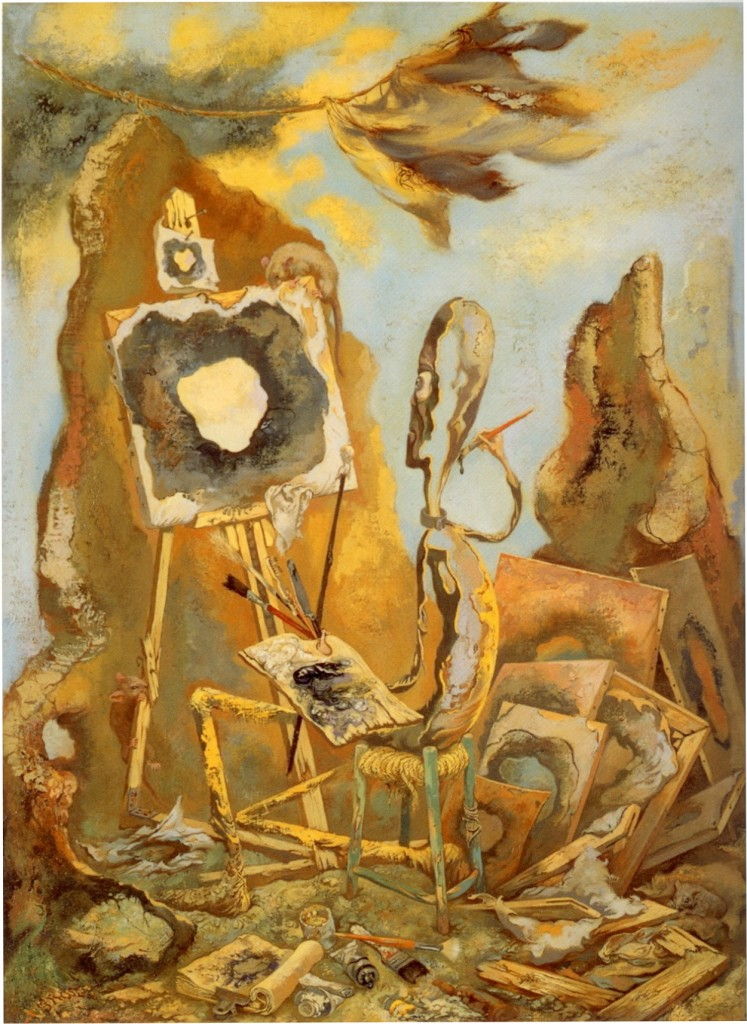
George Grosz’s venomous satire is still largely evident as in the 1940s series of “stickmen,” emaciated gray figures of working-class poverty.
Sitting at an easel, the same hollow-brained figure stares desperately at a rotting, blistered canvas. His brush is at the ready but the support is crumbling along with the world and his own body. His task is unenviable and absurd. His brush can’t help the situation, and it can’t drive away the rats from his feet. As a metaphor for Grosz’s own growing skepticism with political activism, this painting reveals his discontent with an activity that increasingly seems as hollow as his “stickmen.”
The longed-for end of the war brought with it the recognition that humanity was now threatened with a nuclear apocalypse. The Stickmen, post-nuclear creatures without bodies, is Grosz’s last major group of works, culminating in the haunting Painter of the Hole. He bade farewell to America with a group of collages, a joyful return to a technique of the Berlin years: “You stay dada all your life.” Grosz died in July 1959, only a few months after returning to Berlin.
